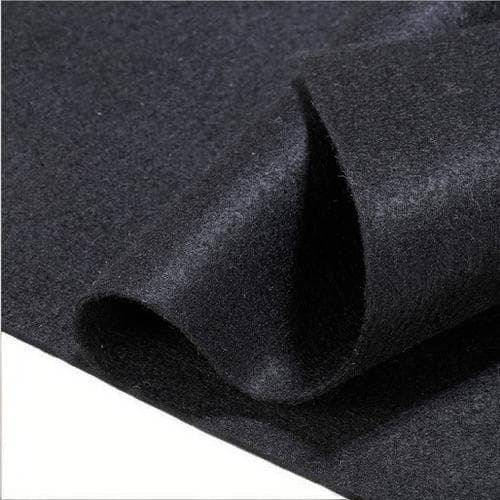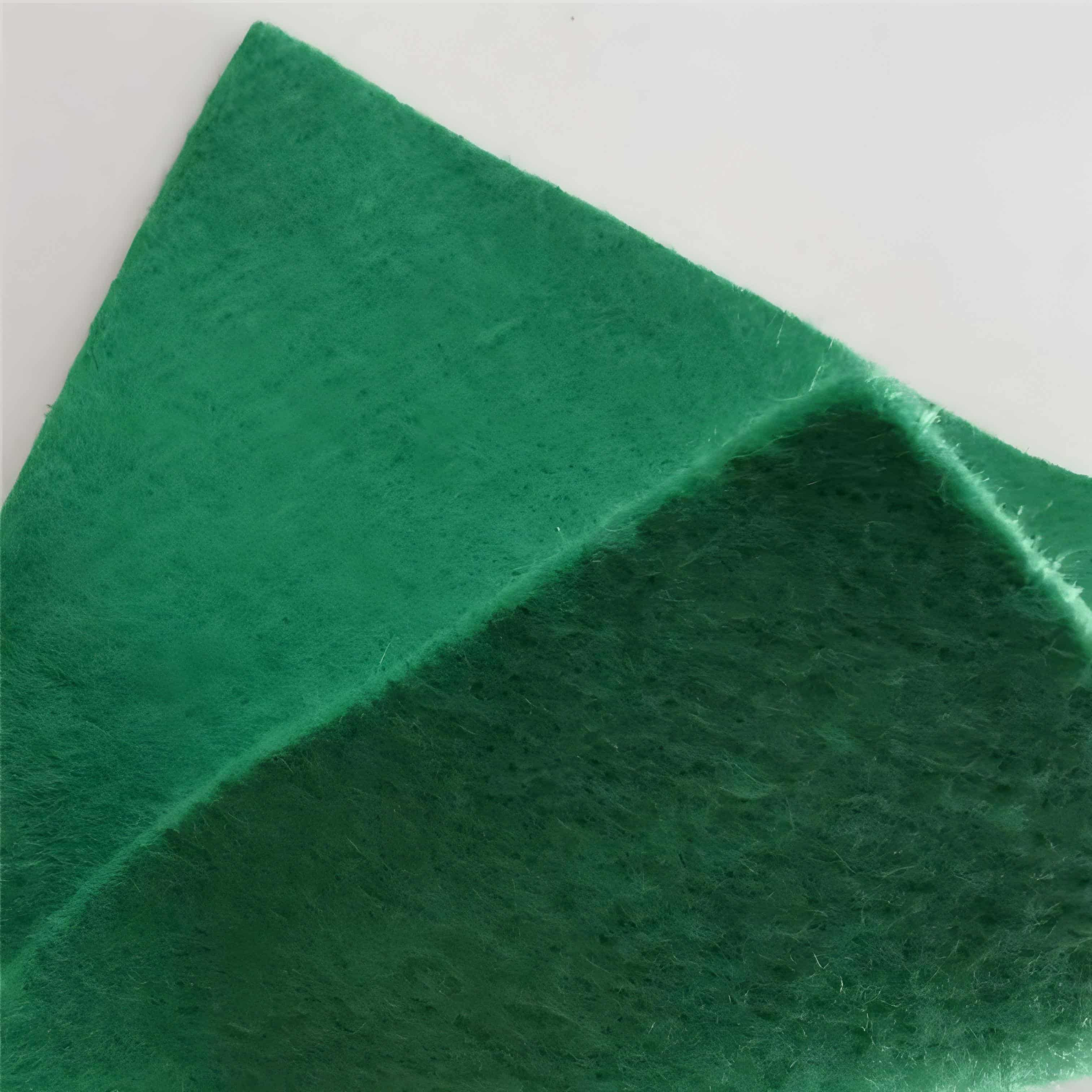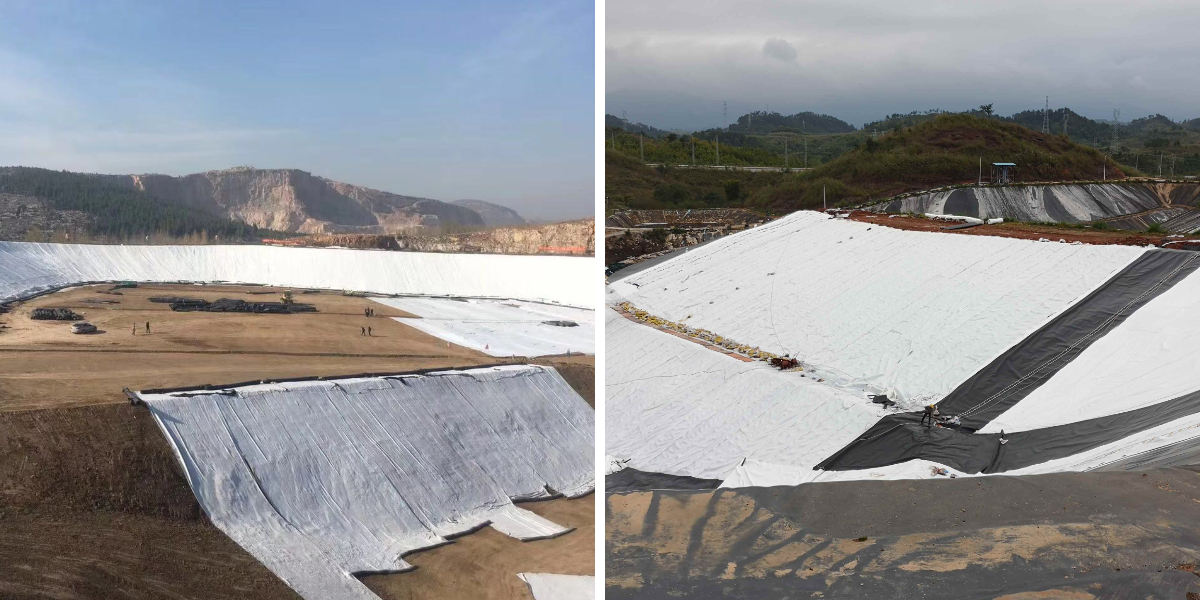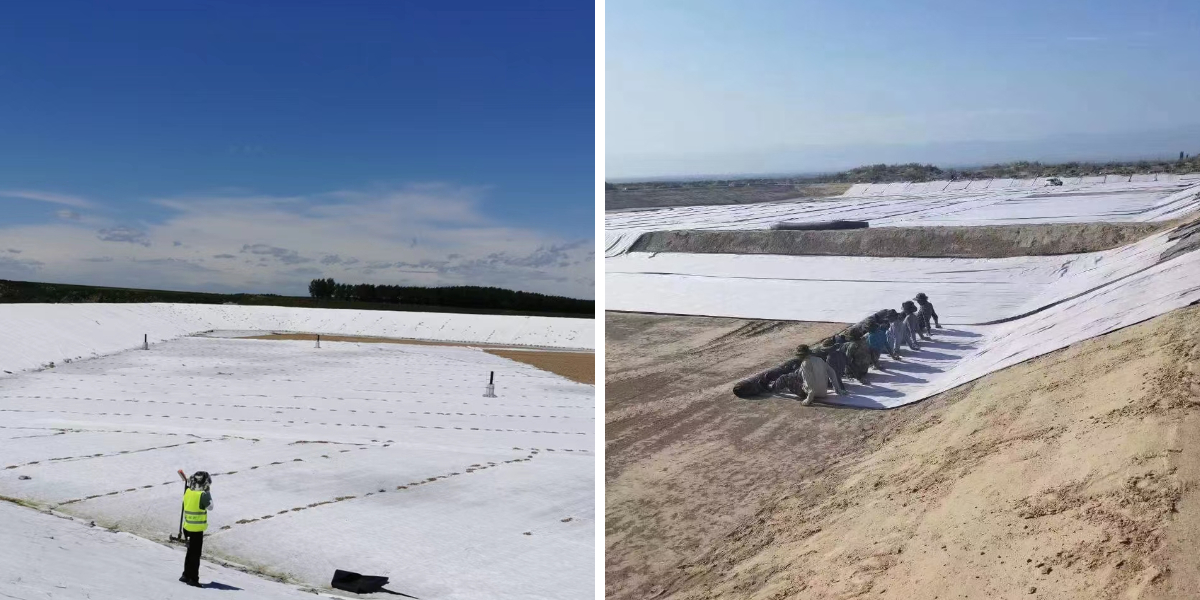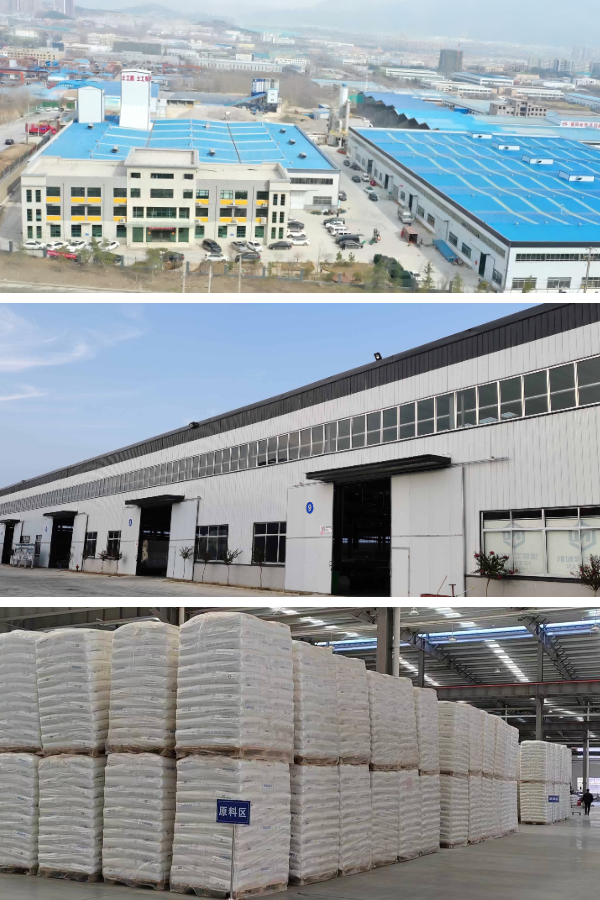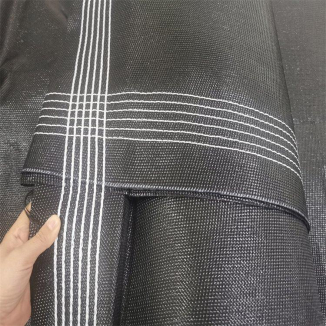Geofabric Road Construction
1. Strengthen the bearing capacity of the roadbed: closely integrate with the roadbed soil, improve the overall shear strength, disperse vehicle loads, reduce roadbed settlement and deformation, and ensure the stability of the road structure.
2. Efficient isolation and filtration: block the mixing of materials from different soil layers, prevent fine soil particles from blocking the sand and gravel base, and allow moisture to penetrate and be discharged, maintaining the dryness of the roadbed.
3. Strong resistance to damage and weather: resistant to construction compaction and long-term vehicle friction, resistant to ultraviolet radiation, acid and alkali corrosion, adaptable to complex road conditions and climates, and extending road life.
4. Good construction adaptability: It can be cut and spliced to adapt to different road widths and terrains, with convenient and efficient laying, shortening the construction period and reducing later maintenance costs.
Products Introduction:
Geofabric Road Construction is a high-performance geosynthetic material designed specifically for the construction of transportation infrastructure such as highways, railways, and rural roads. It is made from high-strength fibers such as polypropylene and polyester, processed through weaving, needle punching, or composite processes, and has multiple functions such as structural reinforcement, isolation and filtration, and drainage protection. As the core auxiliary material of road engineering, its core function is to improve the stability of the roadbed, extend the service life of the pavement, and reduce maintenance costs. It is widely used in various levels of highways, urban roads, rural soil road hardening and other scenarios, and is an indispensable key material in modern road construction.
Product Features:
1. High strength roadbed reinforcement performance: Adopting a special fiber interwoven structure, it has extremely high tensile strength and tear resistance, which can effectively enhance the overall shear strength of the roadbed soil. When vehicle loads act on the road surface, geotextiles can distribute concentrated stress to a larger area of the roadbed, reducing local settlement and deformation, avoiding problems such as pavement cracking and collapse caused by unstable roadbeds, and providing solid structural support for the road.
2. Precise isolation and filtration function: The fiber pore size is scientifically designed to strictly block the mixing of roadbed soil and base sand and gravel materials, prevent fine soil particles from entering the sand layer and causing pore blockage, and allow rainwater and surface water to quickly penetrate into the drainage system below the roadbed through the pores, keeping the roadbed dry. This feature can effectively prevent roadbed softening, frost heave and other diseases caused by water accumulation, and maintain the stability of road structure.
3. Excellent wear resistance and weather resistance: The surface has been specially treated to withstand the rolling and friction of heavy machinery such as road rollers and pavers during construction, and is not easily damaged; At the same time, it has excellent resistance to UV aging, acid and alkali corrosion. When exposed to complex outdoor environments such as sunlight, rain, snow, high temperature, and severe cold for a long time, its physical properties decay slowly, and its service life can reach 15-20 years or more, greatly reducing the frequency and cost of road maintenance.
4. Flexible adaptation and efficient construction characteristics: The product has a lightweight texture, good flexibility, and can be flexibly cut and spliced according to road width, length, and terrain characteristics (such as bends, slopes, bridgeheads, etc.), without the need for complex professional equipment. The laying process is simple and efficient, and can be quickly operated manually or mechanically. It can closely adhere to the surface of the roadbed without wrinkles or hollowing, effectively shortening the road construction period and improving engineering efficiency.
Product Parameters:
project | metric | ||||||||||
Nominal strength/(kN/m) | |||||||||||
6 | 9 | 12 | 18 | 24 | 30 | 36 | 48 | 54 | |||
1 | Longitudinal and transverse tensile strength / (kN/m) ≥ | 6 | 9 | 12 | 18 | 24 | 30 | 36 | 48 | 54 | |
2 | Maximum elongation at maximum load in longitudinal and transverse directions/% | 30~80 | |||||||||
3 | CBR top penetration strength /kN ≥ | 0.9 | 1.6 | 1.9 | 2.9 | 3.9 | 5.3 | 6.4 | 7.9 | 8.5 | |
4 | Longitudinal and transverse tearing strength /kN | 0.15 | 0.22 | 0.29 | 0.43 | 0.57 | 0.71 | 0.83 | 1.1 | 1.25 | |
5 | Equivalent aperture O.90(O95)/mm | 0.05~0.30 | |||||||||
6 | Vertical permeability coefficient/(cm/s) | K× (10-¹~10-), where K=1.0~9.9 | |||||||||
7 | Width deviation rate /% ≥ | -0.5 | |||||||||
8 | Unit area mass deviation rate /% ≥ | -5 | |||||||||
9 | Thickness deviation rate /% ≥ | -10 | |||||||||
10 | Thickness coefficient of variation (CV)/% ≤ | 10 | |||||||||
11 | Dynamic perforation | Puncture hole diameter/mm ≤ | 37 | 33 | 27 | 20 | 17 | 14 | 11 | 9 | 7 |
12 | Longitudinal and transverse fracture strength (grab method)/kN ≥ | 0.3 | 0.5 | 0.7 | 1.1 | 1.4 | 1.9 | 2.4 | 3 | 3.5 | |
13 | Ultraviolet resistance (Xenon arc lamp method) | Longitudinal and transverse strength retention rate% ≥ | 70 | ||||||||
14 | Ultraviolet resistance (fluorescence UV lamp method) | Longitudinal and transverse strength retention rate% ≥ | 80 | ||||||||
Product Applications:
1. High grade highway construction: in the subgrade treatment of expressway and first-class highway, it is laid between the subgrade soil and the base course as an isolation layer to enhance the bearing capacity of the subgrade, reduce the subgrade settlement caused by long-term heavy load driving of vehicles, and ensure the smoothness and service life of the pavement, especially for the reinforcement treatment of soft soil foundation sections.
2. Urban roads and municipal engineering: used in the construction of urban main roads, secondary roads, and sidewalks, it can effectively isolate the roadbed soil and sand and gravel base, prevent soil pollution of base materials, accelerate rainwater discharge, avoid water on the road surface affecting traffic flow, and improve the durability and safety of urban roads.
3. Rural road hardening and renovation: In the hardening of rural dirt roads and the construction of village roads, as a reinforcing material for simple roadbeds, it can significantly improve the bearing capacity of dirt roads, reduce road damage caused by rainwater erosion, lower maintenance costs in the later stage, and provide an economical and practical road hardening solution for rural areas.
4. Road maintenance and upkeep engineering: In the renovation and repair of old roads, it is laid between the old road surface and the new base layer to serve as an isolation and reinforcement, preventing impurities in the damaged areas of the old road surface from affecting the structure of the new road surface. At the same time, it enhances the strength of the repair area and extends the service life of the repaired road.
5. Special section treatment: Used as transitional reinforcement material in special areas such as bridge head jumping sections, culvert inlet and outlet sections, road and railway intersection sections, etc., to reduce settlement differences between different structures, avoid steps and cracks on the road surface, and improve driving comfort and safety.
Geofabric Road Construction plays an irreplaceable role in the field of road construction with its core advantages of high-strength roadbed reinforcement, precise isolation and filtration, excellent wear and weather resistance, and flexible and efficient construction. It can not only fundamentally solve the problems of road surface damage caused by unstable roadbed, water accumulation, and material mixing in road engineering, significantly improve the stability and durability of road structures, but also bring significant economic and social benefits to various levels of road projects by shortening the construction period and reducing maintenance costs. Whether it is the renovation of high-grade highways, urban roads, or rural roads, this product can provide reliable technical support for road construction and is an ideal choice for creating high-quality, long-life, and low-cost road projects.



